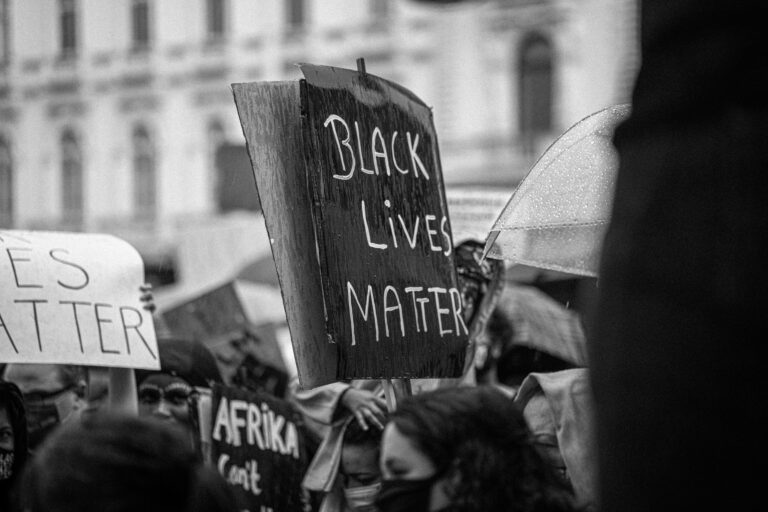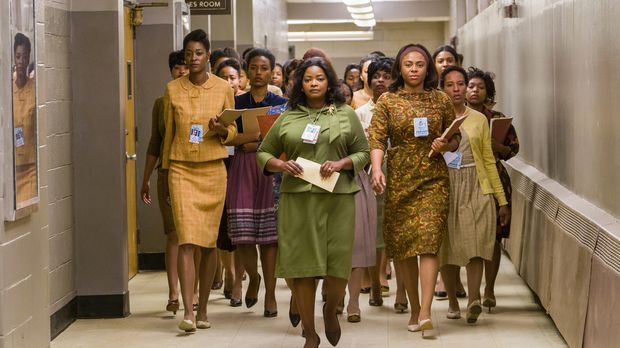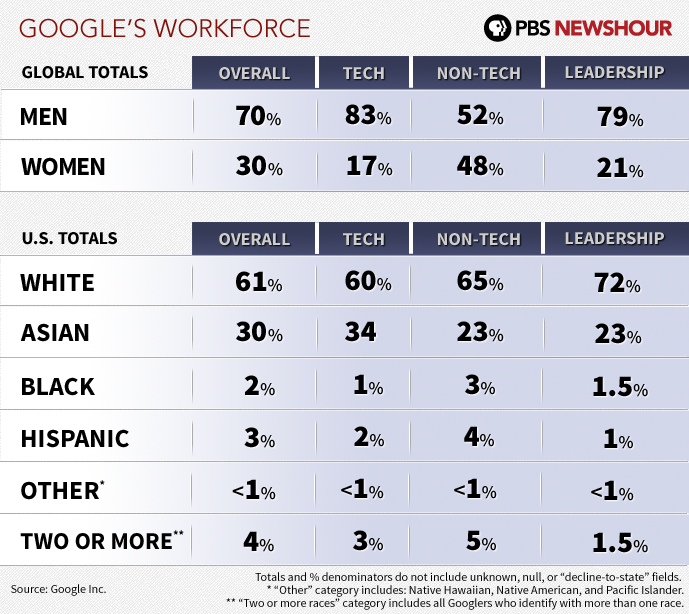Why are women and People of Colour still underrepresented in the tech industry? What is the reason they are usually paid less than their white male colleagues? Why do they in fact often experience harassment at their workplace? [1] Because the tech industry has – just saying as it is – a problem with racism and sexism.
Discrimination in tech has to change. Not just because to make the world a better place for everybody, but also due to the fact that diverse teams achieve much better business results. Those outcomes can be an increase in attractiveness for millenial and generation z employees. It can also lead to an increased moral and productivity, which is measurable important since “disengaged employees cost US businesses up to $550 billion a year from lost productivity”. Diversity in tech teams has also shown to increase innovation by up to 20% by adding a performance boost compared to competitors. [2]
So how can we understand the issues holding back diversity in tech and how can we benefit from its effects?
Where does discrimination in tech come from?
Knowledge is power and women in the tech industry have not always been underrepresented. Quite the opposite! In the early days of programming women constituted a reasonable part of the industry. They worked for the military and NASA and were part of the whole branch. The fact-based film ‘Hidden Figures’ gives a good insight into discrimination in tech. It is about three Black women who worked in the 1950s and 1960s as mathematicians for NASA and about the problems they had to deal with. [3]
In the 1960s and 1970s the industry grew fast and developers were needed desperately. Hence a software company hired psychologists to identify the personality of good programmers through a test. The test revealed that good developers “don’t like people”. Many software companies relied on that test and searched for that kind of people as developers. [4] That resulted in the stereotype of the anti-social, male and genius nerd. The idea of the male genius brings along that asking him to work with others in a team would diminish his brilliance.
Though, the problem is not only about gender representation in the industry, but also about the implicit gendering of different types of work, meaning how gender is embedded in the job. The corporate culture recognizes certain jobs as “male”, such as programming, software architecture, or the genius vision, while others are considered to be “female”, such as care, content, or communication. [5] As a consequence, the work of some is more valued (and usually more paid) than the work of others.
Misfortunes never come singly - racial discrimination in tech
In many cases discrimination is intersectional. This means that the experience of discrimination due to gender is often connected with racial discrimination and vice versa. Katherine Johnson, Dorothy Vaughan and Mary Jackson, the women that are portrayed in ‘Hidden Figures’, could tell you a thing or two about it. As Women of Colour in tech they experienced double discrimination.
And even more than 50 years later these problems still exist. Surveys reveal that almost half of the Black respondents (48%) that work in tech already experienced racial discrimination. In addition to that, the racial pay gap is salient. [6] In fact there is even a name for the circumstance, that only one out of 50 programmers is Black and therefore often the only one in a room or the whole company: OBDS (Only Black Developer Syndrome) shows that especially Black people are really underrepresented in tech. [7]
Even Google, who proclaim themselves on being a diverse, open company with programs like ‘Women Techmakers’ struggle with overcoming this issue (see employment stats below). [8]
Slight changes
The Black Lives Matter movement did change something in people’s minds. Especially some humans who are themselves not affected by racial discrimination got a better understanding how deep racism is embedded in society and social structures. An example for that is that a BLM activist achieved that the definition of racism had been changed in the Merriam-Webster dictionary: From an outdated explanation it had been changed to a definition that better expresses the asymmetrical power structures that come with racial discrimination. [9]
In the tech industry discussions about the master branch took place. “The master-slave relationship in technology usually refers to a system where one – the master – controls other copies, or processes.” [10] So far, this has nothing to do with racism, you might say. But words are never just words. [11] They don’t exist in a vacuum, but in our society.
Words such as ‘master’, ‘slave’, ‘black’, and ‘white’ do have a history and more than one meaning. Terms like ‘blacklist’ and ‘whitelist’ support the notion that ‘black’ means something bad, while ‘white’ means something good. By using those terms some people might feel discriminated because the words refer to certain events in history and presence, as slavery or racism. In the last few years, several major tech companies made an effort to change such terms into “racially neutral” words that still can be understood by anybody. [12]

How to overcome discrimination and benefit from diversity
Now you as a leader, manager, employee or entrepreneur might ask yourself how to make it better and create an improved work atmosphere in your business. Here’s what you can do!
1. Analysis
Identify what your hiring process, employment statistics or wage distribution looks like. You can only do something about it if you recognize and understand the problem.
2. Pledge
Commit to change something. If you’re a public or enterprise institution, publish your statistics to hold yourself accountable (e.g. Google employment stats, see above).
3. Be proactive & make offers
“Since research shows that women and older workers are less likely to negotiate, leave less room for negotiation in your offers. Evaluate pay scales at least annually to become more transparent in your approach to pay.” [13]
4. Accept your biases, but also fight the consequences
Accept that you do have biases when it comes to hiring, even if you consider yourself a really open-minded person. In case you are not sure if you are biased, use a “flip it to test” approach: If you feel during a hiring process that e.g. a Person of Colour is not qualified enough for the job, ask yourself (and the hiring committee) honestly if you would have the same reservations if it were a white man. [14] If the answer is no, you know what to do.
5. Equalize performance reviews
As you already know, performance reviews, hiring processes and promotions are affected by unconscious biases. So provide manager training and controls to ensure that everybody is treated the same and to prevent biased decisions that exclude women and People of Colour.
6. Start a conversation
Start the conversation with your team, invite them to suggest their ideas or share their information on Glassdoor. [15]





